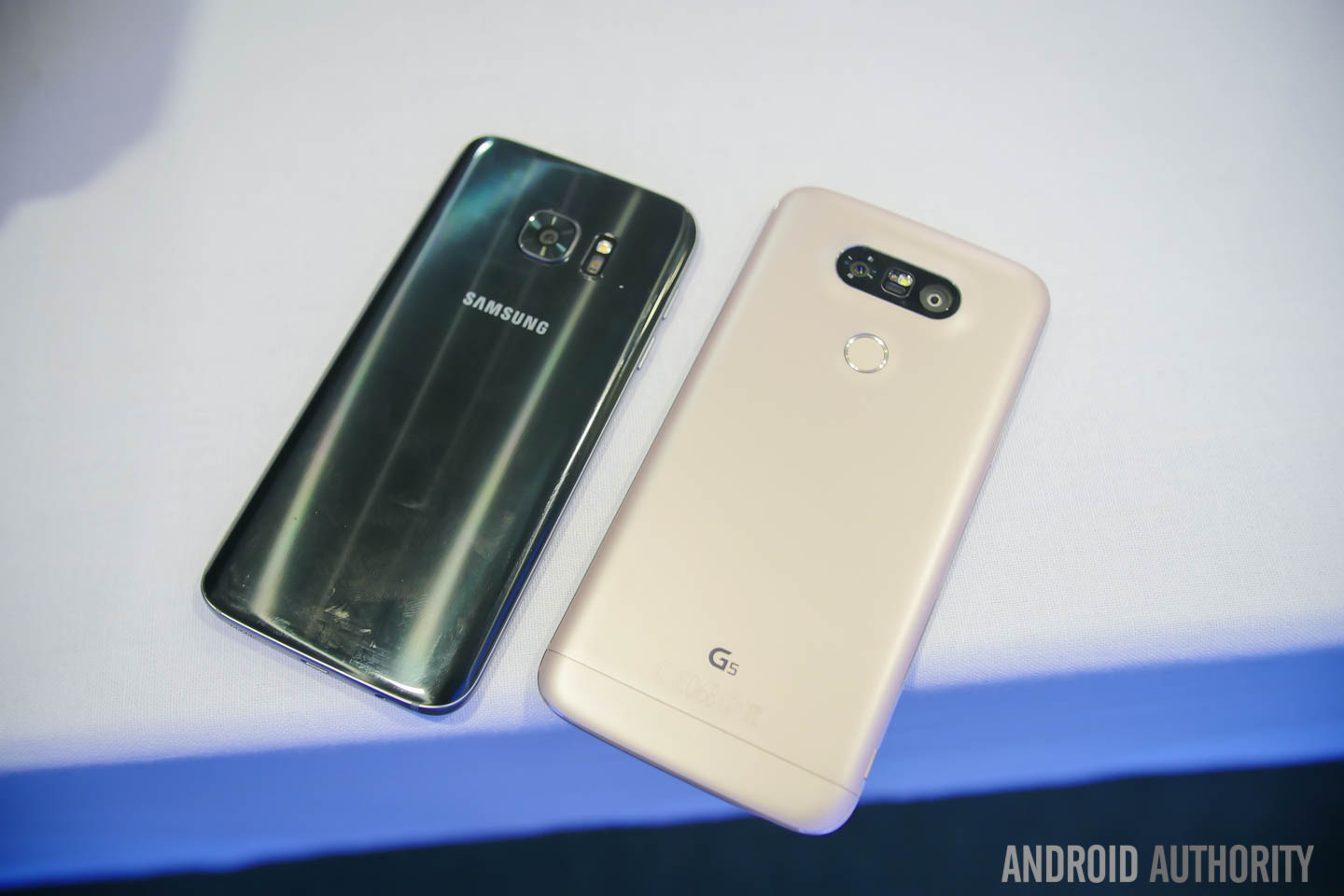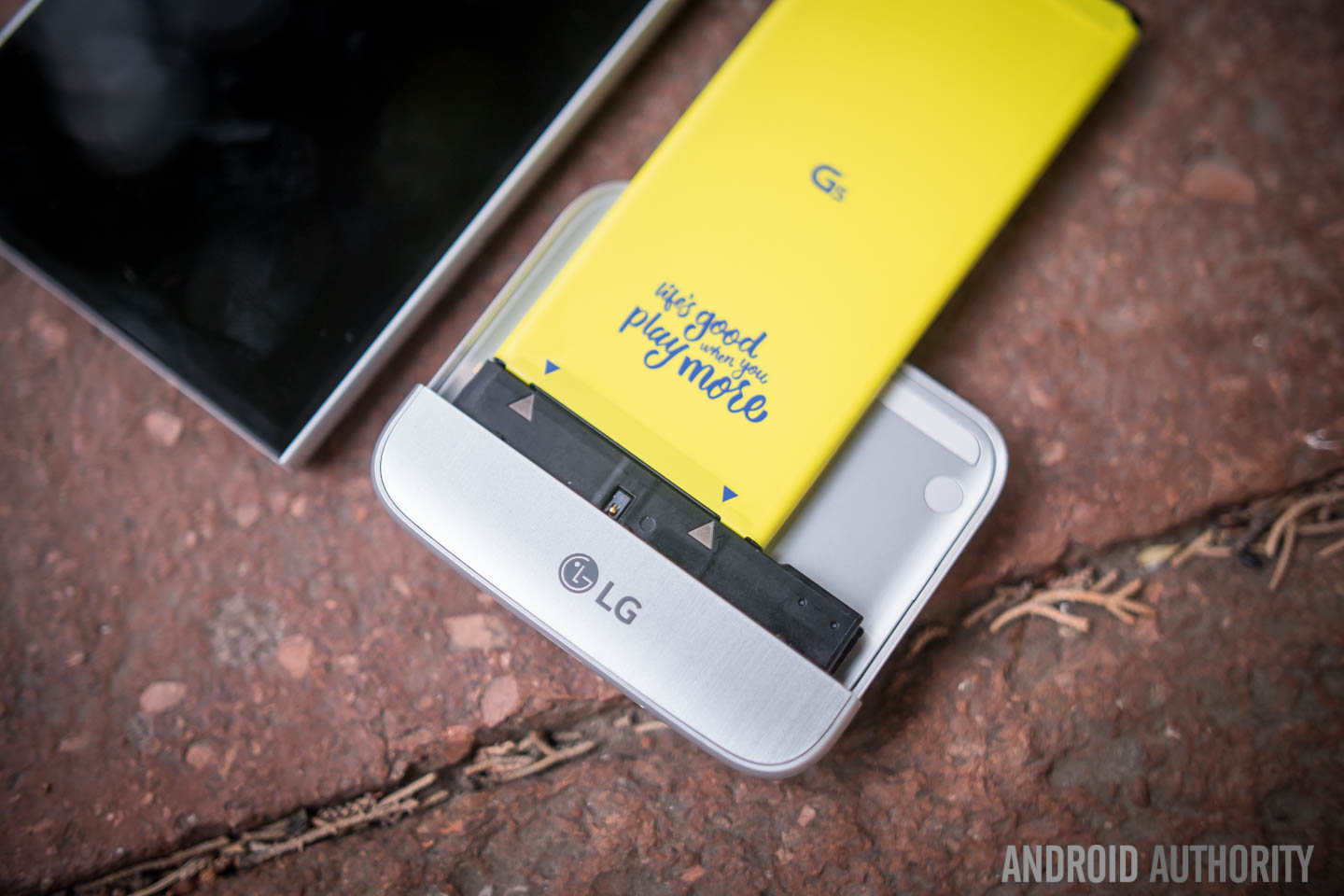Affiliate links on Android Authority may earn us a commission. Learn more.
For LG G5 and Galaxy S7 design and ‘extras’ are key, but what’s most important to you?

It’s 2016 and it takes more than a bumped up spec sheet to impress the masses. This wasn’t always the case. There was a time when going from one generation of processor to the next meant huge performance gains, or when going from a low resolution screen to something like 720p resulted in a massive visual difference.
Nowadays, the average consumer is hard pressed to see the difference between one generation of a device and the very next, at least when it comes to everyday performance. Sure, those of us techies might be able to tell the difference, but it’s hard to argue that a brand new flagship is absolutely needed to have a good phone experience. In fact, it’s perfectly possible to have a good mobile experience even with a device as old as something like the Nexus 5, which came out back in 2013. And it’s this slowdown that has allowed mid-range phones to become so good over the last year or so.
What does this mean for flagships, though? Generally speaking, it means that you either have to innovate through design, or through ‘extras’ like fingerprint scanners, water resistance, etc. Sure, having the latest processor or bumping up the RAM doesn’t hurt either, but for many, it’s these extras or design enhancements that arguably really help sell a phone.
[related_videos align=”center” type=”custom” videos=”675613,675002,674813,675238″]
As MWC 2016 has unfolded, we’ve seen a number of new handsets unveiled, with the key among them being the LG G5 and the Galaxy S7 (and S7 Edge). Both of these phones have their own very distinctive design language, with LG opting to utilize a metal design, while the Galaxy S7 family sticks to the glass and metal design language first introduced with the Galaxy S6. As far as extras go, the two phones are very different here as well, aside from both of them offering a fingerprint reader and a microSD slot. Of course both of these features are quickly becoming standard features for many modern flagships, which is somewhat ironic considering it wasn’t too long ago that OEMs were phasing out expandable storage.
The real selling point for the LG G5 revolves around the phone’s unique modular design, which allows you to remove the bottom portion for adding special modules. This design also makes it possible to swap out the battery, something that is pretty much unheard from today’s flagships.

On the other hand, the Samsung Galaxy S7 only has one major ‘extra’ that you won’t find on most other phones today, and that’s water and dust resistance. Funny enough, even Sony has moved away from officially rating it’s handsets for water resistance, despite long being a major advocate for this type of technology.
What about the rest of the pack? What sets them apart? For HTC, it has been the Boomsound front-facing speakers for years now, those this has seemingly gone away starting with the HTCOne A9 and rumored to continue with One M10. For Motorola, it’s Moto Maker. This leads us to an important question, what kind of extras matter the most to you? Speaking on the design front, what build material do you most prefer? Be sure to cast your vote(s) in our poll, and share your thoughts in the comments.